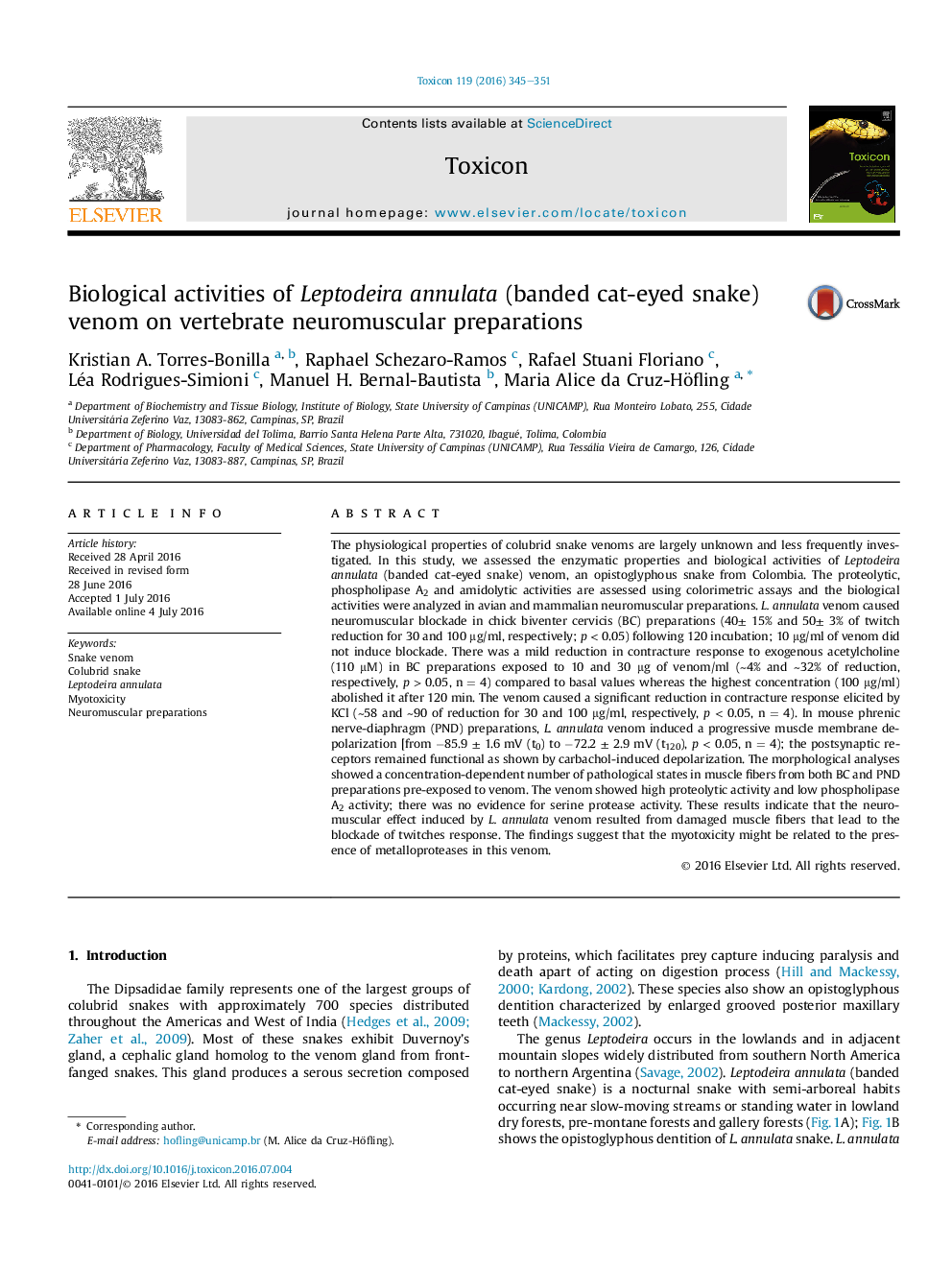| کد مقاله | کد نشریه | سال انتشار | مقاله انگلیسی | نسخه تمام متن |
|---|---|---|---|---|
| 2064020 | 1544117 | 2016 | 7 صفحه PDF | دانلود رایگان |

• Leptodeira annulata venom induces partial neuromuscular blockade in chick and mouse neuromuscular preparations.
• The venom produces important alterations in muscle fibers and tissue architecture.
• L. annulata venom-induced alterations were more prominent in avian than in mammalian preparations.
• The most activity of venom is proteolytic and due to metalloproteases.
• Venom-induced neuromuscular blockade is likely induced by muscle fibers damage than by postsynpatic receptors dysfunction.
The physiological properties of colubrid snake venoms are largely unknown and less frequently investigated. In this study, we assessed the enzymatic properties and biological activities of Leptodeira annulata (banded cat-eyed snake) venom, an opistoglyphous snake from Colombia. The proteolytic, phospholipase A2 and amidolytic activities are assessed using colorimetric assays and the biological activities were analyzed in avian and mammalian neuromuscular preparations. L. annulata venom caused neuromuscular blockade in chick biventer cervicis (BC) preparations (40± 15% and 50± 3% of twitch reduction for 30 and 100 μg/ml, respectively; p < 0.05) following 120 incubation; 10 μg/ml of venom did not induce blockade. There was a mild reduction in contracture response to exogenous acetylcholine (110 μM) in BC preparations exposed to 10 and 30 μg of venom/ml (∼4% and ∼32% of reduction, respectively, p > 0.05, n = 4) compared to basal values whereas the highest concentration (100 μg/ml) abolished it after 120 min. The venom caused a significant reduction in contracture response elicited by KCl (∼58 and ∼90 of reduction for 30 and 100 μg/ml, respectively, p < 0.05, n = 4). In mouse phrenic nerve-diaphragm (PND) preparations, L. annulata venom induced a progressive muscle membrane depolarization [from −85.9 ± 1.6 mV (t0) to −72.2 ± 2.9 mV (t120), p < 0.05, n = 4); the postsynaptic receptors remained functional as shown by carbachol-induced depolarization. The morphological analyses showed a concentration-dependent number of pathological states in muscle fibers from both BC and PND preparations pre-exposed to venom. The venom showed high proteolytic activity and low phospholipase A2 activity; there was no evidence for serine protease activity. These results indicate that the neuromuscular effect induced by L. annulata venom resulted from damaged muscle fibers that lead to the blockade of twitches response. The findings suggest that the myotoxicity might be related to the presence of metalloproteases in this venom.
Journal: Toxicon - Volume 119, 1 September 2016, Pages 345–351